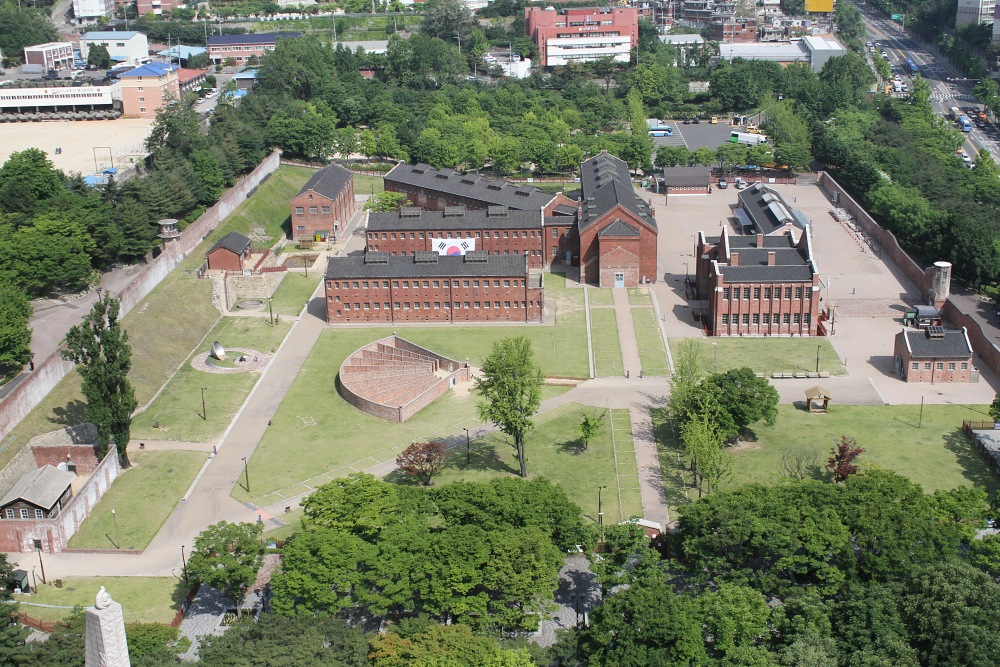
Seodaemun Prison History Hall (Seodaemun Prison History Hall)
By Lee Jihae
Seodaemun Prison History Hall in Seoul's Seodaemun-gu District was a modern prison built by imperial Japan in 1907 and opened the following year. The facility is now a site that teaches the painful history of the nation's colonial period to about 600,000 visitors every year.
Korea.net on July 30 visited the landmark ahead of the 80th Liberation Day on Aug. 15.
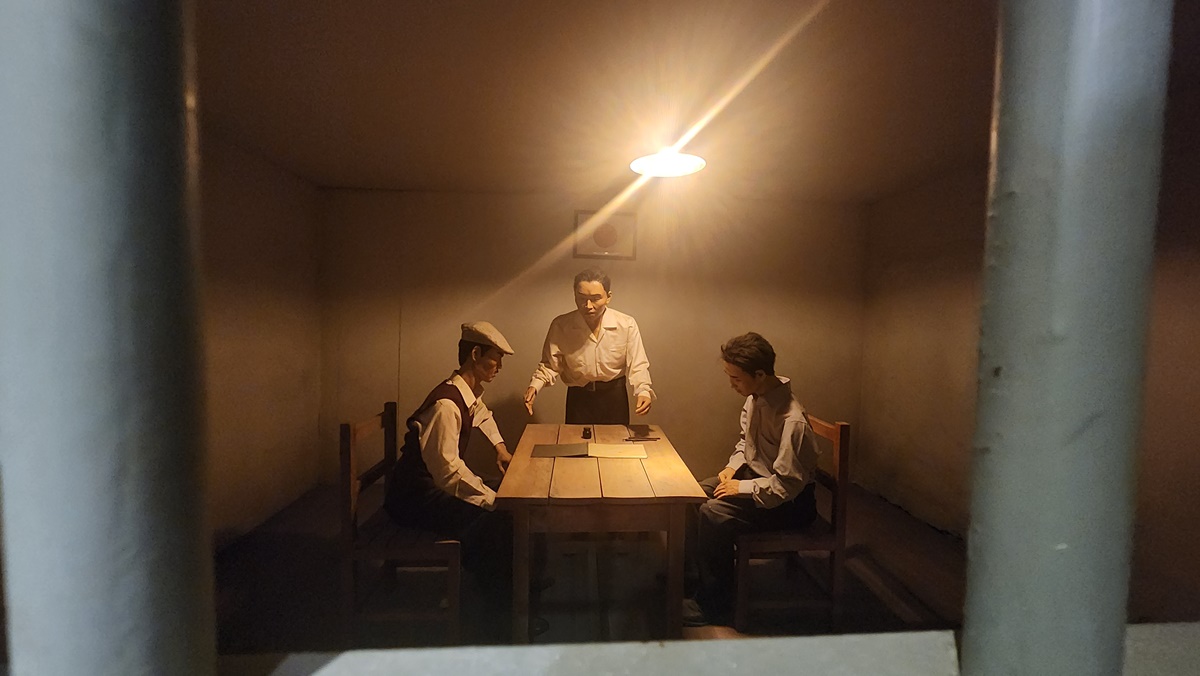
Independence activists who were interrogated by Japanese police at the prison were subject to psychological pressure through verbal abuse and the screams and sounds of fellow activists being tortured. (Jihae Lee)
The prison basement is dark. Senior detectives were stationed here to avoid the hassle of sending independence activists to a police station right before trial.
The interrogation room was intentionally installed next to a torture chamber so that those being grilled could hear the screams of prisoners being tortured. The objective was to maximize fear and lead the questioning to the prison's advantage. Models reenacting the situation and photos of activists who were tortured exhibit the horrors and physical damage experienced at the time.
The interrogations and torture were horrific. Victims had their heads pushed in water tanks or were hung upside down while water was poured in their noses or mouths to obstruct breathing. Some even died after their lungs were filled with water, while others perished after being put inside boxes with sharp nails and having the boxes shaken.
Some visitors showed red eyes and cried while watching videos showing the testimonies of the prison's survivors.
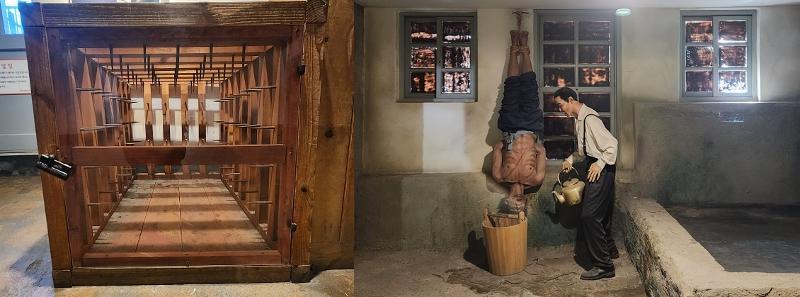
The box (left) with spikes is where independence activists were placed inside and had the boxes shaken. On the right is a scene of water torture. (Jihae Lee)
Life in prison was also like slavery. Inmates had to work 10-14 hours a day making clothing or mining. After the outbreak of World War II, many primarily were forced to produce war supplies. There was no break from January to March and from October to December, when days had less sunlight and heat. From April to August when the day was longer, inmates received a 15-minute break each in the morning and afternoon.
When going between their cells and workplaces, prisoners had to jump over wooden sticks naked to show that they had nothing on them. The prison had separate facilities for men and women, but this did not prevent the humiliation of inmates.
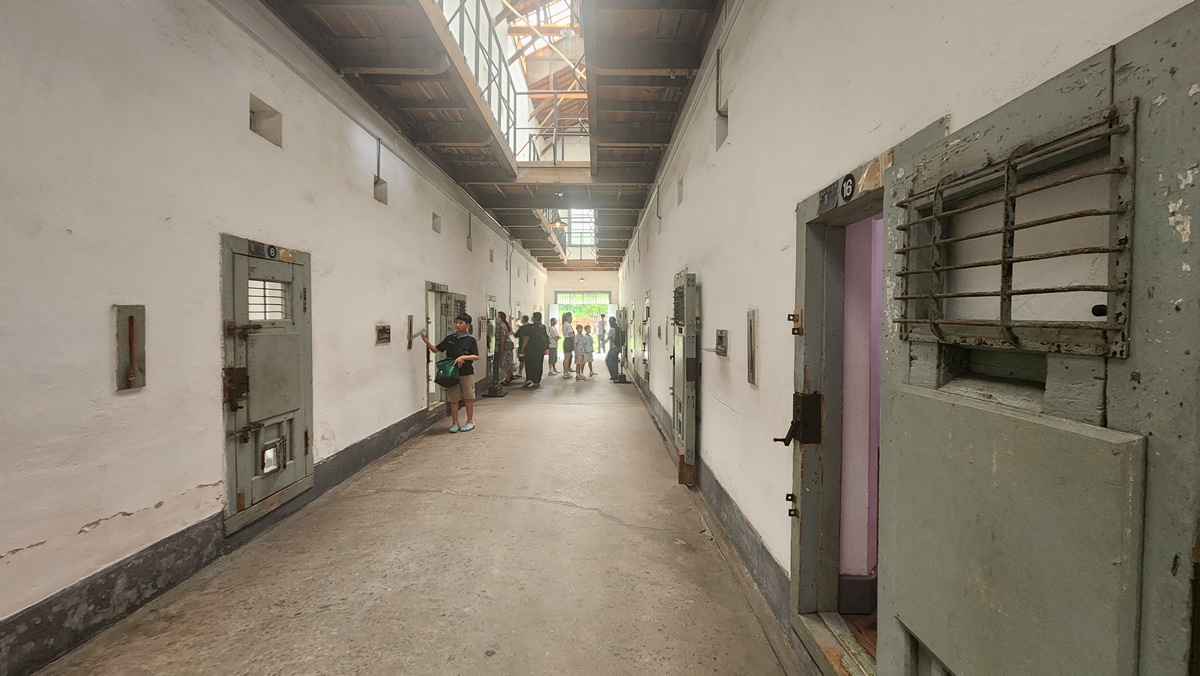
Cells at Seodaemun Prison History Hall. (Jihae Lee)
Conditions within the cells were also barbaric. Ten or more inmates shared a cell covering 10.9 square m, while three were forced into a small room of 3.9 square m. The toilet on the side of the room gave off a persistent stench.
Shim Hoon, an activist who was incarcerated at this prison, wrote to his mother at the time, "The orange brick walls heat up like a furnace in summer and the toilet pot with defecation boils in the cell. We can't even stretch our legs and bedbugs and fleas bite us."
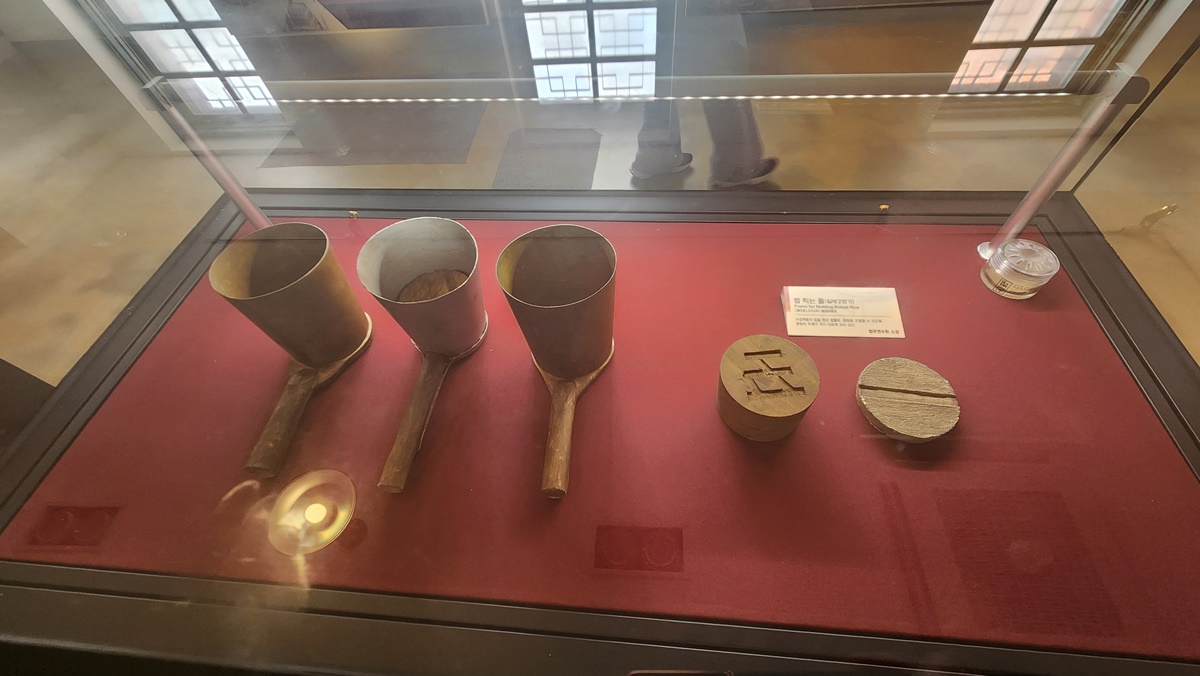
On the left are cups for putting rice inside and on the right are round plates to be put within the cups. The thinner the plate, the more rice could enter the cup, and portion size was determined by the severity of an inmate's crime. (Jihae Lee)
The amount of food rations was determined by the severity of an inmate's crime and divided into nine levels. Common criminals were rated 1-5 while independence activists were categorized as "ideological criminals" levels 6-9.
Thin or thick round plates were put inside rice cups to determine ration size. The thinner the plate, the more rice went in and the thicker the plate, the less rice there was. Thus activists had to survive on far less rice than ordinary criminals.
Inmates at the prison were released on Aug. 16, 1945, the day after Korea was liberated with Japan's surrender in World War II. They marched on the streets of Seoul's Jongno-gu District to celebrate freedom.
The prison was used until 1987, when some of its facilities were demolished. In 1998, the site was opened as Seodaemun Prison History Hall.
The hall is open from Tuesday to Sunday (closed Mondays) from 9:30 a.m. to 6 p.m. from March to October and from 9:30 a.m. to 5 p.m. from November to February. Guided tours are available with online reservations.
Admission is KRW 3,000 for an adult (ages 19-64), KRW 1,500 for teens (13-18) and KRW 1,000 for children (7-12).
jihlee08@korea.kr